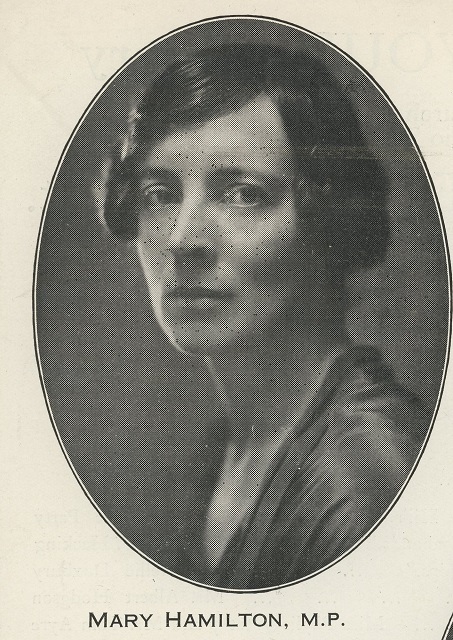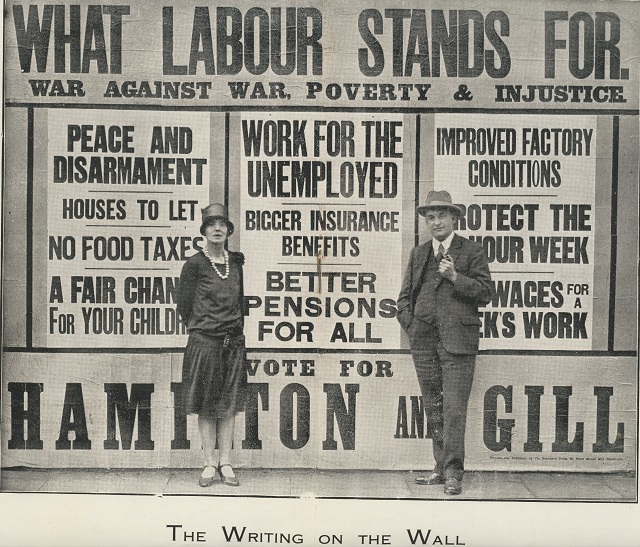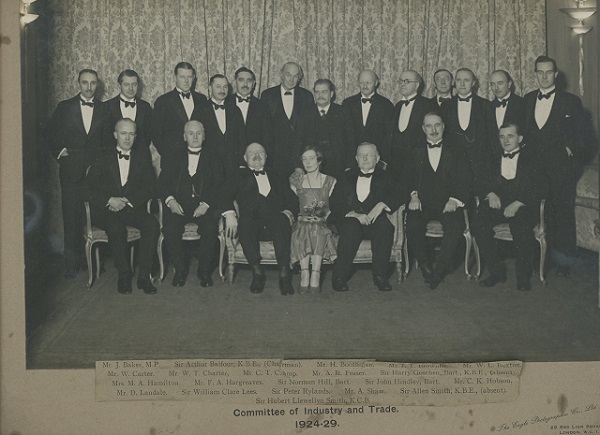Mary Agnes Hamilton

Source: Blackburn Trades Council and Labour Party Souvenir Programme, June 15th, 1929 (Frankland Archive, Blackburn Library)
Blackburn's First Female Member of Parliament
Mary was born in Withington, Manchester, the eldest of six children, to Robert and Margaret, (nee Duncan), Adamson. Before their marriage in 1881 Robert had been a Professor of Logic at Glasgow University and Margaret, a Quaker, was a teacher of botany at Manchester High School. In 1889, the family moved back to Scotland and Mary was educated at Aberdeen and Glasgow Girl's High Schools before attending the University of Kiel, Germany, for seven months in 1901 to learn German. She went to Newham College, Cambridge, like her mother, to study Classics and graduated with first class honours in 1904. In 1905, Mary married Charles Joseph Hamilton, an economist colleague at the University of South Wales, Cardiff, where she had briefly been employed as a history tutor. She obtained a divorce in 1914.
Mary was a prolific writer and through the 1910's supported herself as a journalist, by translating works from French and German and by publishing books for children on ancient history and American Presidents. She moved in literary circles with Leonard and Virginia Woolf and the Strachey family; meeting regularly with intellectuals and economists whilst living near Fleet Street in the twenties. Mary published two short sympathetic biographies of two women Trade Unionists, Margaret Bondfield and Mary Macarthur, and, under the pseudonym of "iconoclast", a portrait of Ramsey Macdonald. In 1916, she wrote a controversial novel against war called ‘Dead Yesterday’.
Mary stood unsuccessfully for Labour in the 1923 and 1924 General Elections before winning, in 1929, one of the two Blackburn seats with the highest number of votes of any Labour woman candidate and making her Blackburn's first female Member of Parliament.

Source: Blackburn Trades Council and Labour Party Souvenir Programme, June 15th, 1929 (Frankland Archive, Blackburn Library)
![]()

Source: Blackburn Trades Council and Labour Party Souvenir Programme, June 15th, 1929 (Frankland Archive, Blackburn Library)
She made her mark in parliament with a series of speeches and always wore red shoes! In 1929, Mary became a delegate to the League of Nations in Geneva and worked on the Refugees Commission and the International Committee on Intellectual Cooperation. She was also the parliamentary private secretary to the Postmaster General, Clement Attlee, who wrote to ‘The Times’, on her death, that she was one of the ablest women who had entered the House of Commons. Mary was elected to the Labour Party's parliamentary executive but lost her seat in the 1931 General Election. She had become increasingly critical of Labour's unemployment policies and never returned to Westminster.

Image taken by 'The Eagle Photographic Co. Ltd.' for more details see 'Library Image Gallery: image entitled Committee of Industry and Trade 001'Mary broadcasted for the B.B.C. and, in 1929, presented the first "Week in Westminster". She gave many talks on current affairs and careers for women and was made a governor of the B.B.C. for the period 1933-1937. She was also a member of the panel of the popular programme ‘Brains Trust’.
Mary then worked in the Civil Service for the General Production Division of the Ministry of Information from February 1940 to February 1941; then transferred to the Ministry of Reconstruction where she served on planning committees for education, housing, employment and the Beverage Reports. In May 1944, she returned to work for the overseas department of the Ministry of Information and was in charge of the American Division, in 1946 this was transferred to the Foreign office where she stayed until 1952. For this work Mary was awarded the C.B.E. in 1959.
At the age of eighty three in 1966 Mary died in London.
Much of this information is from Wikipedia and Ancestry.
Compiled by Janet Burke, Community History Volunteer,
Published June 2022.

